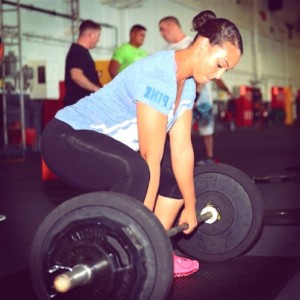If you’re a woman in midlife using semaglutide to lose weight, you might be losing more than fat.
Muscle loss is a real concern — and protecting your strength and lean tissue is essential.
Fortunately, there are two key strategies to help minimize muscle loss: upping your protein intake and doing the right kind of strength training.
Research presented at ENDO 2025, the Endocrine Society’s annual meeting, revealed that women and older adults taking GLP-1 medications like semaglutide may face a greater risk of losing muscle mass.
Since muscle supports balance, metabolism, bone strength and blood sugar control, this kind of loss can have wide-ranging effects.
The study followed 40 people with obesity over three months.
Of the group, 23 were given semaglutide while 17 followed a diet and lifestyle program.
Although the semaglutide group lost more weight, both groups lost a similar percentage of lean mass.
Within the semaglutide users, women, older adults and those consuming less protein saw the greatest drop in muscle.
More muscle loss also correlated with smaller improvements in blood sugar regulation.
Animal-based protein sources like grass-fed beef, poultry, fish, eggs and bison are great sources of healthful protein.
Strength Training Exercises for Long-Term Lean Muscle

The deadlift — an all-body exercise that works many muscles at the same time.
As for exercise, compound strength movements are your best tool for building lean, fat burning muscle.
These include squats, lunges, deadlifts, leg presses chest presses, seated rows and lat pull-downs.
These exercises work multiple muscle groups at the same time and are far more effective than isolation movements like biceps curls or triceps kickbacks.

The seated row. Shutterstock/Microgen
Women often shy away from heavy lifting, but rest assured — you won’t bulk up.
Building “big muscles” takes a hardcore commitment to intense training.
Instead, strength training two or three times a week with progressive resistance (heavier weights over time) helps maintain lean mass and improve results from semaglutide.

One type of squat. Pexels/Cleiton silv
The resistance should be heavy enough for you to perform eight to 12 reps for optimal growth in muscle tissue, but up to 15 for some exercises might be preferable depending on the individual.
If you can feel as though more than 15 reps can be done, the resistance is too light if your goal is to regain lost muscle, build up a “muscle bank,” or prevent baseline muscle loss from a GLP-1 drug.
Strength training plus adequate protein and recovery?
That’s the formula for staying strong, healthy, and resilient — no matter your age or body size.










































